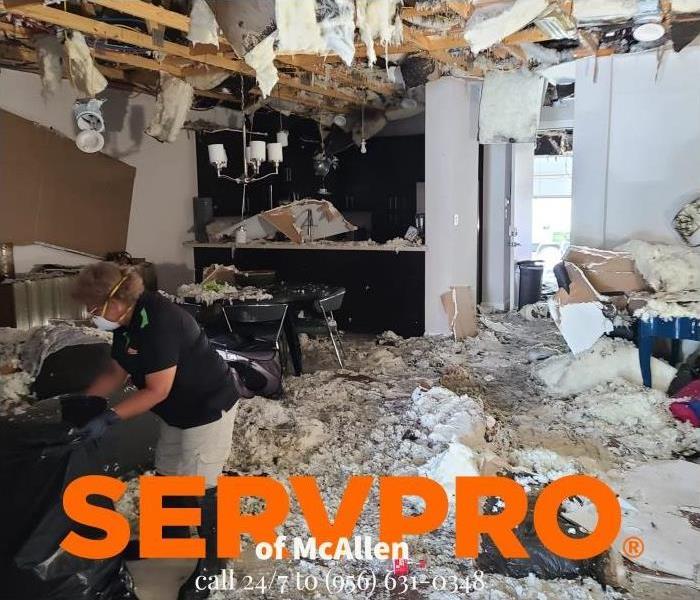Fire Prevention 101 with SERVPRO of McAllen
7/4/2022 (Permalink)
There have been more than 20,000 house fires that the American Red Cross has responded to this year, and that is only a portion of the total number of fires that have occurred in the United States.
Smoke detectors will always be the best way to prevent damage and the loss of life, but there are a few other things you can do that can provide protection to your home and your loved ones, even some that are as simple as cleaning up.
Clear the Clutter
Clutter is likely something we all fight on a regular basis already, but it can actually create a fire hazard. Allowing hallways, stairways, and utility spaces to fill with unused items can not only block emergency exits but also provide fuel to the fire.
Leaving loose clothing near a water heater can actually start a fire. Keeping your space clear means quick access to escape routes in the event of an emergency and can also slow down the progression of flames.
Another common source of fire in the home is overloaded extension cords. Remove any unused electronics and unplug appliances that you don’t use on a regular basis.
Take a look around your home and ensure that there is space between your walls and furniture. This allows for proper airflow to prevent overheating.
Create a Defensible Space in Your Yard
The area around your home is key in providing protection from fires that originate outside. Using strategically placed landscaping protects your home and gives room for firefighters to work in the event of an emergency.
Some states like California have imposed defensible zone regulations because this is such an effective way to slow the spread of a wildfire. With our dry climate that creates such a potential for grass fires, this type of landscaping is smart for us, too. In January, we saw five acres burn after a grass fire started, and the windy and dry conditions spring brought kept us on a constant watch for fire.
Intentional landscaping doesn’t mean you can’t plant the annuals you want; instead, it means using intentional placements of your plants and trees to provide the best protection. You should always keep your yard clear of dead plants, leaves, and limbs as these can strengthen a fire.






 24/7 Emergency Service
24/7 Emergency Service
